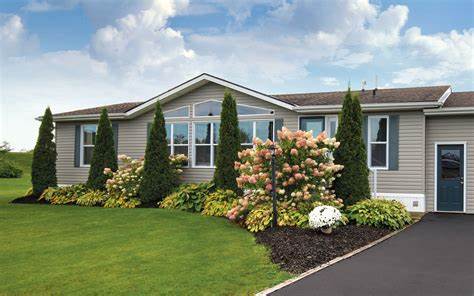
What Are HUD Standards for Manufactured Homes?
A manufactured home is a structure that is made in a factory that has a non-removable chassis and can be transported to a location. These homes are built to comply with the U.S. Department of Housing and Urban Development (HUD) Federal Manufactured Home Construction and Safety Regulations.
In this article, we’re going to look at the regulations and give you some ideas of what to look for to make sure your home is up to code.
HUD Code Standards
In 1976, after a series of incidents in manufactured homes and much criticism, HUD created these safety standards, designed to improve the safety of manufactured homes. They also wanted to change the way people thought of these homes. The HUD code is very specific and thorough.
The HUD standards outline certain requirements for a manufactured home, such as the minimum size of the home, the number of outside doors that are required, ceiling height, and the number of windows. These requirements were specifically developed to keep you safe in the home and give you a way out in case of a fire.
HUD standards state that manufactured homes must be a minimum of 400 square feet, with bedrooms for one person having at least 50 square feet and bedrooms for two people having a minimum of 70 square feet of floor space. Each bedroom must have at least one window facing the exterior of the home, for exit access in case of a fire.
Ceilings must be at least 7 feet high in habitable rooms, such as bathrooms, bedrooms, and living rooms. Ceilings in storage areas and hallways must be 6 1/2 feet high.
Kitchens and bathrooms must be fabricated with a mechanical ventilation system in each room.
Each manufactured home has to be designed with a minimum of two outside spaces of 12 feet for a single-wide home and 20 feet for a double-wide home.
Lastly, manufactured homes must have a permanent chassis to transport the home.
HUD Zones
Most HUD standards are national and represent homes across the entire United States, but there are some that are designated for specific regions or zones within the country. These additional regulations are based on specific weather conditions that happen in different areas of the country.
A manufactured home must meet the national requirements and also the requirements within their specific zone. For example, if you live in an area that gets snow during the winter months, the roof of your home must be made to withstand the additional weight of heavy snowfall. If you leave near the coast, where there is a chance of hurricanes, the home must be manufactured to withstand hurricane wind speeds.
These standards are strict for a reason. They are effective, and they protect you and your family from being harmed by a structure that was poorly built. Once your home has been approved and complies with HUD standards, your local and state governments cannot force you to change your home if the changes would not keep you in compliance.
Is Your Home HUD Compliant?
While it is almost impossible for many homeowners to know all the information on the HUD code, there are some points that you should be familiar with, and a few areas of your home that you can check without the assistance of a carpenter, inspector, or home builder. Here are some of those areas:
- Your home should have two exits. The doors cannot be obstructed by anything and need to be at least 12 feet apart (in a single-wide) or 20 feet apart (in a double-wide). If your home had to be transported as two units and then put together at the location of the home, it is a double-wide.
- Every bedroom in the manufactured home needs to have a clear route to one of these exit doors. All doors on this route must have knobs that do not lock. Every bedroom must also have a window that can be used for exit in case of an emergency.
- Your bathroom(s) must have a fan.
- Your kitchen must also have a ventilation system.
- Any additions to your home can connect directly to it as it stands, but they must be built in a way that none of the weight of the addition is on the home.
Most of the time, issues come, not when a manufactured home is delivered and set up, but later, when additions are approved by local personnel. When approving permits, they don’t always follow the national HUD requirements, and this can make a home non-compliant.
What Happens When Your Home Is Non-Compliant?
If you are planning to live in your home for a while and you are not looking to make any additional changes or to refinance your home, you may get by with a non-compliant home. When you go to sell your home in the future, you or whoever inherits your home later will be required to bring it up to code before it can be sold. In some states, you won’t be allowed to sell it without the HUD seal stating it is up to code.
You will also have issues refinancing your home with a federally guaranteed loan, or with a loan that is secured by the government — for example, an FHA or VA loan. You will need the HUD seal to secure a loan from these entities.
In the long run, it’s in your best benefit to have your home up to code at all times, not only for your safety but also for any future sales of your home or loans you may need.



